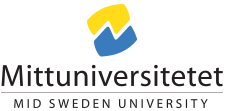A referral from a doctor is necessary to undergo measurement using iDXA. Jämtland County Council has an agreement with NVC for conducting bone densitometry measurements. Doctors from the orthopaedic, rheumatology and medical clinics can refer patients to us.
Measurement of body composition can only be carried out if the person has been referred by a doctor.
Body composition
Full body scanning is used when measuring body composition. The test subject’s weight and height is registered, after which they are placed in the iDXA for full body scanning. This takes around 10 minutes. The results of the measurements include bone weight, skeletal muscle weight and fat weight for the whole body or specific parts of the body. This information is a valuable tool for evaluating training and rehabilitation.
Body densitometry
A bone densitometry examination measures bone densitometry in the thigh bone and the small of the back. It takes around 10 to 15 minutes and is done while lying down. The measurement is transformed into a points scale, in which the individual’s bone densitometry is compared to the standard values for a reference group of the same age, sex and ethnicity. Bone densitometry measurement is a step in diagnosing osteoporosis or osteopenia. A referral from a doctor is necessary for the examination to be carried out. NVC has an agreement with Jämtland County Council regarding bone densitometry measuring and refers patients here.
Other information
Apart from the tests described here, there are also tests that investigate the risk of spinal fractures, bone densitometry in the lower arm and hip prosthesis analysis. The equipment is so precise that it can be used for subjects from 50 grams (animal studies) up to over 200 kilograms. iDXA can also be used to analyse the geometric qualities of specific parts of the skeleton.
